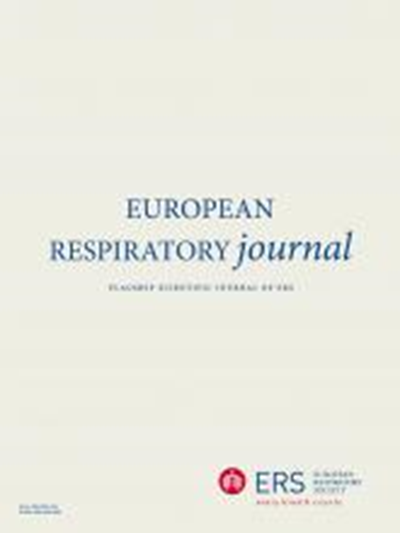How to diagnose TB in migrants? A systematic review of reviews and decision tree analytical modelling exercise to evaluate properties for single and combined TB screening tests.
IF 16.6
1区 医学
Q1 RESPIRATORY SYSTEM
引用次数: 0
Abstract
BACKGROUND Optimising Tuberculosis (TB) disease testing algorithms is fundamental to ensure the effectiveness and cost-effectiveness of migrant screening programmes, including better understanding of the individual and combined screening test properties. The aim of our study was to estimate pooled TB test properties from the literature and combining them in decision analytical modelling with a focus on whether tests used for the diagnosis of TB infection might add value to these algorithms. METHODS We performed a systematic review of reviews (RoR) of diagnostic tests for active TB, searching PubMed, Embase, Web of Science and Cochrane library and pooled test properties extracted from original papers included in reviews. We used these pooled results in a decision tree analysis to estimate test properties for common migrant screening algorithms. FINDINGS We retrieved 1477 records and included 32 reviews, including data from 437 original studies for 18 TB tests, providing pooled results for 13. Our modelling showed that algorithms with interferon gamma release assays (IGRAs) had the highest diagnostic odds ratios (e.g. QuantiFERON/Chest X-Ray (CXR, TB abnormalities)/Xpert dOR 24 670; 95% confidence intervals 11 630-52 328) and high positive predictive values. Best sensitivities were achieved for combinations with parallel cough/CXR screening followed by Xpert (0.88; CI 0.86-0.90) or Ultra (0.92; 0.90-0.94) as well as T-Spot.TB followed by parallel symptom/CXR screening and Ultra (0.81; 0.78-0.83) or Xpert (0.77; 0.75-0.80). INTERPRETATION The significant test accuracy benefit of adding IGRAs to an active TB screening pathway will help inform clinicians and policy makers deciding on the most effective screening algorithms.如何诊断移民中的结核病?对审查和决策树分析建模进行系统审查,以评估单一和联合结核病筛查试验的特性。
背景:优化结核病(TB)疾病检测算法是确保移民筛查计划有效性和成本效益的基础,包括更好地了解个体和组合筛查测试特性。我们研究的目的是估计文献中汇总的结核病检测特性,并将它们结合到决策分析模型中,重点关注用于结核病感染诊断的检测是否可能为这些算法增加价值。方法通过检索PubMed、Embase、Web of Science和Cochrane图书馆,对活动性结核病诊断试验的综述(RoR)进行系统综述,并汇总从综述中纳入的原始论文中提取的试验特性。我们在决策树分析中使用这些汇总结果来估计通用迁移筛选算法的测试属性。结果:我们检索了1477条记录,纳入了32篇综述,包括来自18项结核病检测的437项原始研究的数据,提供了13项的汇总结果。我们的模型显示,使用干扰素γ释放法(IGRAs)的算法具有最高的诊断优势比(例如QuantiFERON/胸部x射线(CXR, TB异常)/Xpert dOR 24 670;95%置信区间为11 630-52 328)和高阳性预测值。咳嗽/CXR平行筛查联合Xpert (0.88;CI 0.86-0.90)或Ultra (0.92;0.90-0.94)以及t点。结核病之后是平行症状/CXR筛查和Ultra (0.81;0.78-0.83)或Xpert (0.77;0.75 - -0.80)。将IGRAs添加到主动结核病筛查途径的显著检测准确性益处将有助于告知临床医生和决策者决定最有效的筛查算法。
本文章由计算机程序翻译,如有差异,请以英文原文为准。
求助全文
约1分钟内获得全文
求助全文
来源期刊

European Respiratory Journal
医学-呼吸系统
CiteScore
27.50
自引率
3.30%
发文量
345
审稿时长
2-4 weeks
期刊介绍:
The European Respiratory Journal (ERJ) is the flagship journal of the European Respiratory Society. It has a current impact factor of 24.9. The journal covers various aspects of adult and paediatric respiratory medicine, including cell biology, epidemiology, immunology, oncology, pathophysiology, imaging, occupational medicine, intensive care, sleep medicine, and thoracic surgery. In addition to original research material, the ERJ publishes editorial commentaries, reviews, short research letters, and correspondence to the editor. The articles are published continuously and collected into 12 monthly issues in two volumes per year.
 求助内容:
求助内容: 应助结果提醒方式:
应助结果提醒方式:


